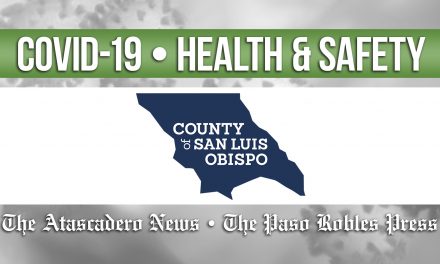By San Luis Obispo County Anti-Human Trafficking Task Force Board
Social media is a double-edged sword that has become a central and consistent theme in human trafficking and exploitation related investigations. On one hand, social media unites us. It connects us to loved ones near and far, helps us stay in touch, and keeps us engaged in the twenty-four-hour news cycle. On the other hand, social media has become an area of the internet where traffickers and exploiters have a seemingly endless supply of potential victims to contact, groom, and manipulate for their personal and financial benefit.
In San Luis Obispo County, there have been multiple instances in 2020 alone where exploiters have contacted victims via a variety of social media platforms and engaged in criminal activity that have led to criminal investigations into human trafficking, pandering, and solicitation of child pornography. Social media is a very real threat to our children, and as stated in previous columns, there is more danger to our local children of being contacted by a trafficker on social media than on our local streets.
There are some common signs that parents and guardians can be attentive to in order to minimize the likelihood of their children being contacted and groomed by a trafficker or exploiter on the internet.
These signs or red flags include:
- A child being secretive about the content of their internet searches or secretive about their social media accounts and “followers” or “friends.”
It is a good practice to only ”follow” or be “friends” with someone that is personally known to us. Being connected to someone on social media that is not actually known to the child and parent(s) opens the opportunity for predators to establish unhealthy and unwanted inappropriate contact.
- A child wanting to spend unhealthy and unreasonable amounts of time on the internet or on social media platforms.
While it is not necessarily out of the ordinary for a child to want more screen time, when the demand to be online becomes obsessive and leads to unreasonable reactions, it may be a concern worth paying attention to. The sad reality is that predators know our children are online more these days because of COVID concerns and distance learning, and as a result, predators are using it to their advantage.
- A child quickly switching the computer screen when a parent or adult approaches them.
Deceptive behavior can be a significant red flag that is worth paying attention to, particularly if other warning signs are present. It is a good practice to have a child’s internet and social media access in open, accessible rooms, and not behind closed doors. Having access to a child’s account and knowing passwords can be a good way to supervise a child’s online activity. This allows for more consistent supervision and can help mitigate any potential problems that may arise.
- A child receiving gifts or coming into possession of items that they either should not have or were not purchased for them by loved ones or friends.
Some very common grooming tactics include showering a victim with gifts or providing electronics or other items they would not normally be able to afford. In addition, predators and traffickers are masters at providing praise and showering a child or victim with verbal affirmation. Traffickers are master manipulators and are well versed in finding a person’s weaknesses and vulnerabilities and exploiting them to their benefit. This often includes finding a person’s perceived emotional or physical shortcomings and filling that void with feigned affection, verbal support, and affirmation, all in an effort to manipulate a person into complete allegiance to a trafficker or exploiter.
- A child using terminology that is not age-appropriate.
If a child has a vocabulary or uses terminology that is not age-appropriate and is primarily sexual in nature, it may be a red flag that is worth investigating. Often, traffickers or exploiters will use terminology that is specific to the illicit sex industry or may be some sort of code. As in most illicit subcultures, there is terminology that is specific to the human trafficking world. One aspect of this language is seen through the use of emojis. The illicit sex subculture has turned otherwise innocent emojis into a nefarious manner of communication. A simple internet search query for secret emoji language can be helpful in deciphering the more sinister nature of what could appear as an otherwise innocent communication through the emojis we all see every day on our electronic devices.
It is important to know that there is no single social media internet platform that is solely used by traffickers and exploiters. In San Luis Obispo County, detectives from the Counter Human Trafficking Team have investigated human trafficking-related cases on platforms such as Facebook, Instagram, TikTok, Snapchat, and the gaming platform Fortnite. While these platforms are some of the bigger names in the social media world, it is important to know that there are many more platforms in use daily by traffickers and exploiters. Some lesser-known applications such as Mocospace, Kik, WhatsApp, Discord, and others are just as dangerous to our children as they provide an avenue for exploitation if not properly supervised.
Just as it is incumbent on law enforcement investigators to stay on top of social media trends, it is equally important for parents, guardians, educators, and anyone with a stake in raising children to be aware of the ever-evolving world of the internet, social media, and gaming platforms. Traffickers and exploiters have an endless supply of internet platforms to recruit, exploit, and sell victims, and it is important that we stay in step with the traffickers to protect our children and loved ones.
It is critical that we are aware that there is danger on the internet and generally know the signs of the type of behavior a trafficker or exploiter may engage in. Aside from being aware of a trafficker’s tactics, it is just as important that adults have an open dialogue with the loved ones in their lives and have a frank discussion about the dangers of social media and the internet. It is necessary that we, as adults, are aware of the true danger that the internet can pose and relay that to our loved ones in an accurate, informed manner. It is vital that we are not only aware of the dangers but also monitor and supervise our children while they are on the internet.
Our children should be trained not to share sensitive information online, particularly with people they do not know. We need to teach our children to never meet up with someone they met on the internet and that any suspected abuse or suspected criminal activity should be reported to law enforcement or a trusted adult.
Education on the issue of internet safety followed up with meaningful engagement can make all the difference in the world. Meaningful engagement and staying on top of the ever-evolving world of the internet and social media can help stem the tide of exploitation before it gets a foothold on one of our loved ones. Education and engagement partnered with vigilance can go a long way.
Until next time.














